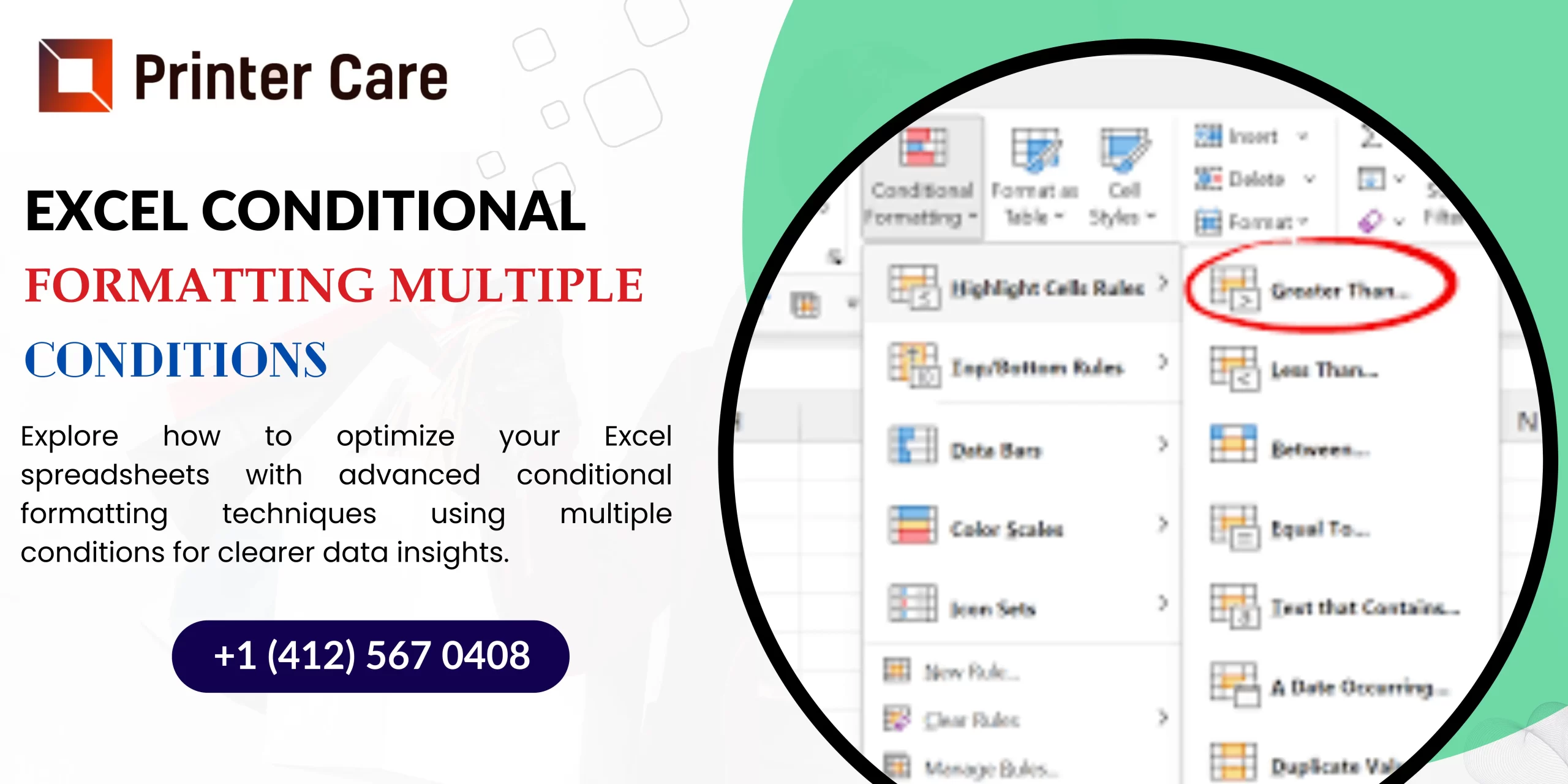Excel Conditional Formatting multiple conditions are used to create visual differentiation in a large set of data. Normally, you can visually differentiate the data using one or more rules. However, in this article, we will explain how to apply Excel conditional formatting multiple conditions. Hence, in Excel, you can use conditional formatting to apply multiple conditions in a single cell or to a range of cells.
Why Excel Conditional Formatting Multiple Conditions is Important?
Before going deeper into the multiple conditions, you need to first understand the basics of conditional formatting in Excel. Conditional formatting allows you to format cells or a range of cells based on their values or the values of other cells.
Excel has several predefined formatting choices, such as highlighting cells that contain a specified value or fall above or below a certain threshold. However, occasionally these default solutions do not satisfy your requirements. This is when the conditional formatting formula comes into play.
How you can create multiple conditions in Excel
To highlight cells with multiple conditions, follow the given steps:
- Select the range of cells to apply the formatting rules
- Then click on the Home tab, and select New Rule under the conditional formatting.
- Choose "Use a formula to determine which cells to format", and type the formula.
- After entering the formula, tap the Format button and add your preferred style.
- Click the OK button twice to return to the Conditional Formatting Rules Manager window.
- Finally, apply the formatting to the selected range of cells and press close.
Excel Conditional Formatting with Multiple Conditions
To highlight cells according to multiple conditions, you can use IF and AND Functions within a conditional formatting rule.
- Select the range of cells you want to apply formatting to.
- Go to the Home tab, click Conditional Formatting, and select the New Rule.
- Then select Use a formula to format cells and enter the following formula: = IF (ANDB4>5, B4<10), TRUE, FALSE)
- Click the Format button.
- Then, set a format. For example, a green fill color.
- Click OK twice to return to the Conditional Formatting Rules Manager.
- Then click Apply to apply the formatting to the selected range of cells and hit close.
Hence, you see every cell in the selected range that has a value greater than 5 and less than 10 10 will have its background color changed to orange.
Examples of Excel Conditional Formatting Multiple Conditions
Let's explore some more examples to visualize how to use Excel conditional formatting with multiple conditions.
Example 1: Highlighting Negative Profit in Red
Suppose, you have a sheet with profit data, and you want to highlight cells that meet the given criteria:
- The profit is negative
- The profit is below the average profit
- Then, you can use the following conditional formatting formula:: =AND(A1<0, A1<AVERAGE(A: A))
Here, in this formula, A1 refers to the cell containing the profit amount, whereas A: A represents the whole column of profit data. The AVERAGE function calculates the average profit, while the AND function combines the two conditions. If both conditions are met, the formula returns TRUE, and the cell is formatted accordingly.
Example 2: Highlighting High-Risk Customers
Suppose you have a customer database, and you want to identify the high-risk customers based on the following criteria:
- The customer’s credit score is below 500
- The customer has missed more than three payments
- Then, you can use the following conditional formatting formula:: =AND(A1<500, B1>3)
here, in this formula, A1 refers to the cell containing the credit score, whereas B1 refers to the cell containing the number of missed payments. The AND function combines the two conditions. If both conditions are met, the formula returns TRUE, and the cell is formatted appropriately.
How to apply Conditional Formatting Multiple Conditions Using the “New Rule” option
In Excel, you can use the "New Rule" option to apply conditional formatting multiple conditions. Follow the given steps:
- Select the range of cells and go to the Home tab.
- Choose Conditional Formatting and then click on New Rule.
- In the “New Formatting Rule” dialog box, choose “Use a formula to determine which cells to format”.
- Then using the formula, enter your first condition. For example, if you want to format cells where the value is greater than 700, then you would enter =A1>700 (hence, assume that the range starts with A1).
- After finishing this, click on the format button to apply the formatting.
If you need to add additional conditions, then follow the given steps:
- You can repeat the steps from step 1 to step 4.
- Then, in the “New Formatting Rule” dialog box, enter other conditions using a formula. For example, if you want to format cells where the value is less than 300, then you would enter =A1<300.
- Then tap the format button and choose the style of formatting.
- Finally, click OK to finish the changes.
Following these steps, you can continue to add as many conditions as you want. Remember that, each condition can be applied one by one. Also, make sure to adjust cell references in the formulas according to the data range.
Conclusion
Excel conditional formatting multiple conditions opens up new possibilities for data analysis and visualization. You can use logical operators and functions to highlight cells based on your specific criteria. Hence, just follow the steps properly to apply conditional formatting to multiple conditions and make your data more visualizing and appealing.
Frequently Asked Questions
How to use Excel Conditional Formatting multiple conditions?
First, you need to select the number of cells, the table, or the entire sheet where you want to apply the conditional formatting. Then, on the Home tab, click Conditional Formatting. After that, click on New Rule and select a style. For example, 3-color scale, select the conditions that you want to apply, and click the OK button.
How do I apply conditional formatting to an entire row based on multiple cells?
To apply conditional formatting to an entire row based on multiple cells, follow the steps:
- Highlight the range of data you want to format.
- Then in the top menu, choose the format and click conditional formatting.
- Then choose the "Custom formula is" rule.
- Now enter your formula, using the $ sign to lock your column reference.

